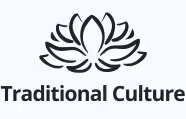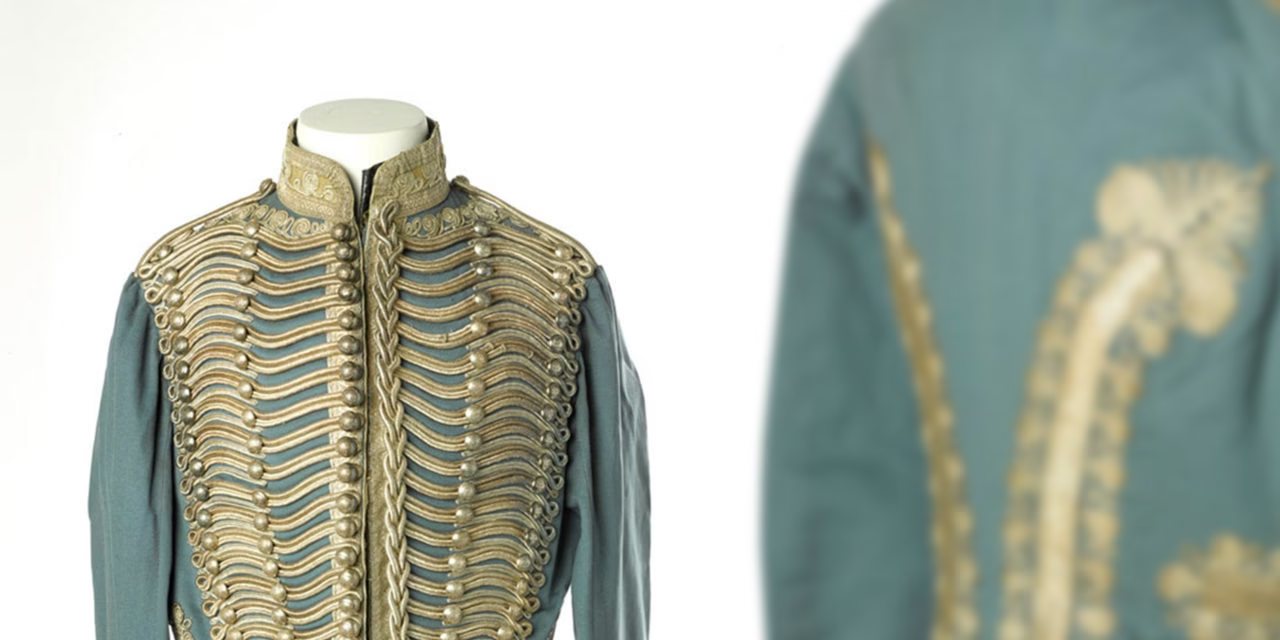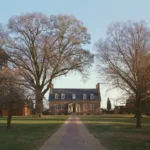Ornamental braid or cording that can function as a garment closure, or be solely decorative.
Kathryn Hennessy and Anna Fischel, authors of Fashion: The Definitive History of Costume and Style (2012), describe frogging as being “a coat closure comprising decorative braid and a spindle-shaped ‘frog button’ that passes through a look in the braid” (444). Frogging is most commonly associated with military uniforms. Photographed in 1895, Winston Churchill, who would later serve as Prime Minister of the United Kingdom, can be seen wearing a frogged military jacket (Fig. 1). At the time of this portrait, Churchill had been commissioned as a second lieutenant in the 4th Hussars on February 20th, 1895. The National Army Museum in London showcases a wide range of military attire that includes frogging—from the most utilitarian, to the highly ornate, as seen in Colonel Francis Strange’s 1869 portrait (Fig. 2).
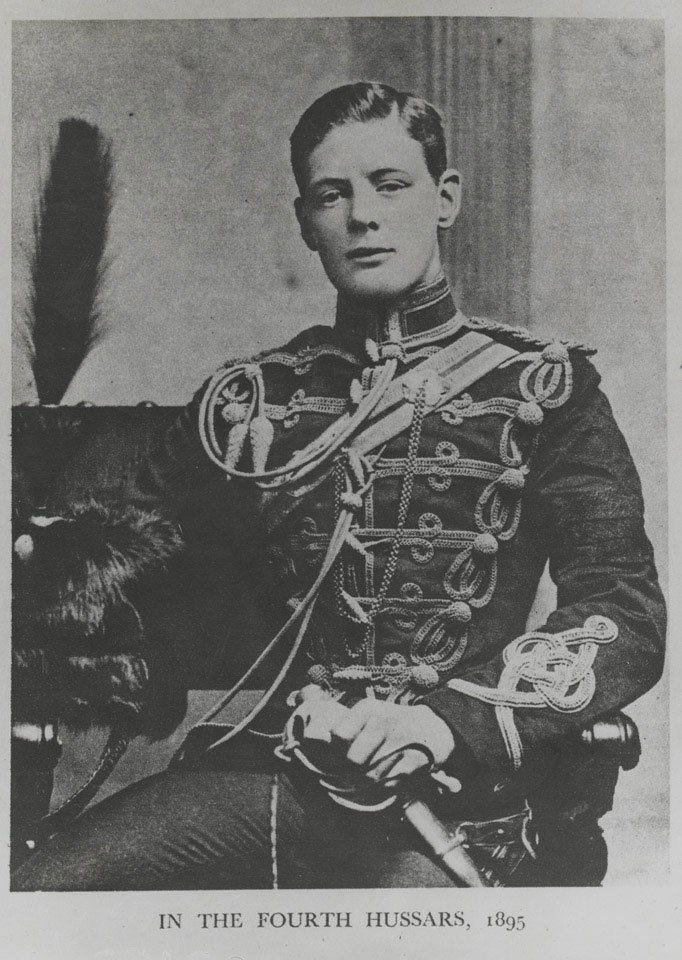
As Wikipedia further explains:
“Frogs and frogging became an important decorative feature on military uniforms from the 17th–19th centuries. This was particularly evident for prestigious regiments, especially cavalry or hussars, and gave rise to the German term for frogging in general, ‘Husarentressen’. These dolman jackets were tight-fitting and dominated by extensive frogging, often in luxurious materials such as gold, silver or brass metallic cording or brocades.
The frogging was usually far more than was necessary for fastening. In some cases it even became non-functional, with a concealed opening beneath it and the original jacket opening becoming a false detail. By the later 19th century, for lower grade uniforms down to postmen, telegraph boys and hotel pages, the frogging cordage would be retained as a decoration but there would be no corresponding toggle or opening with it.”
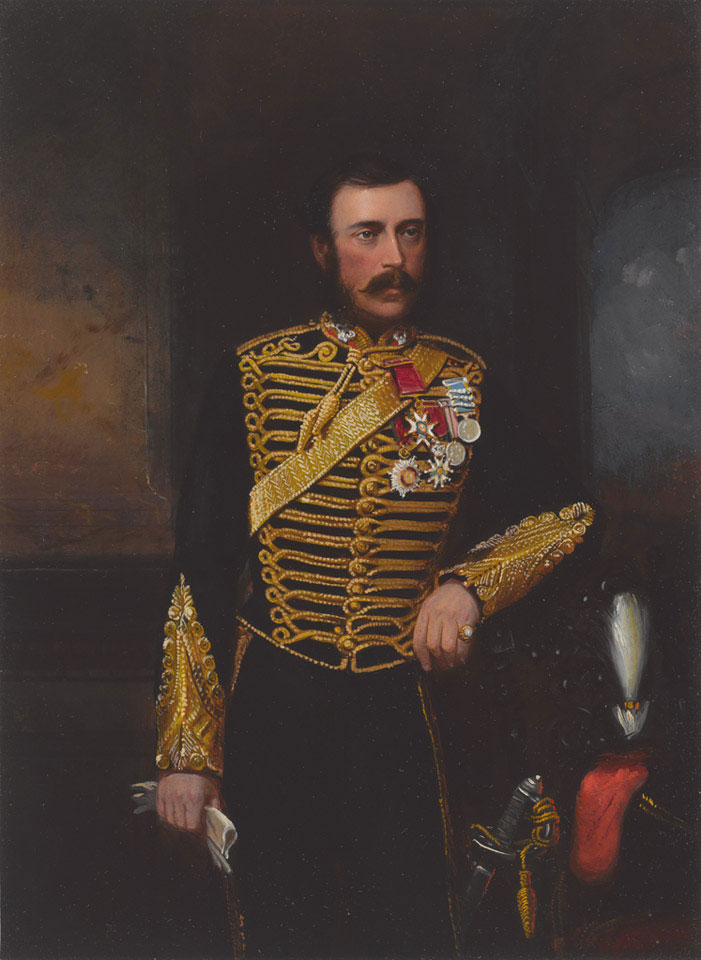
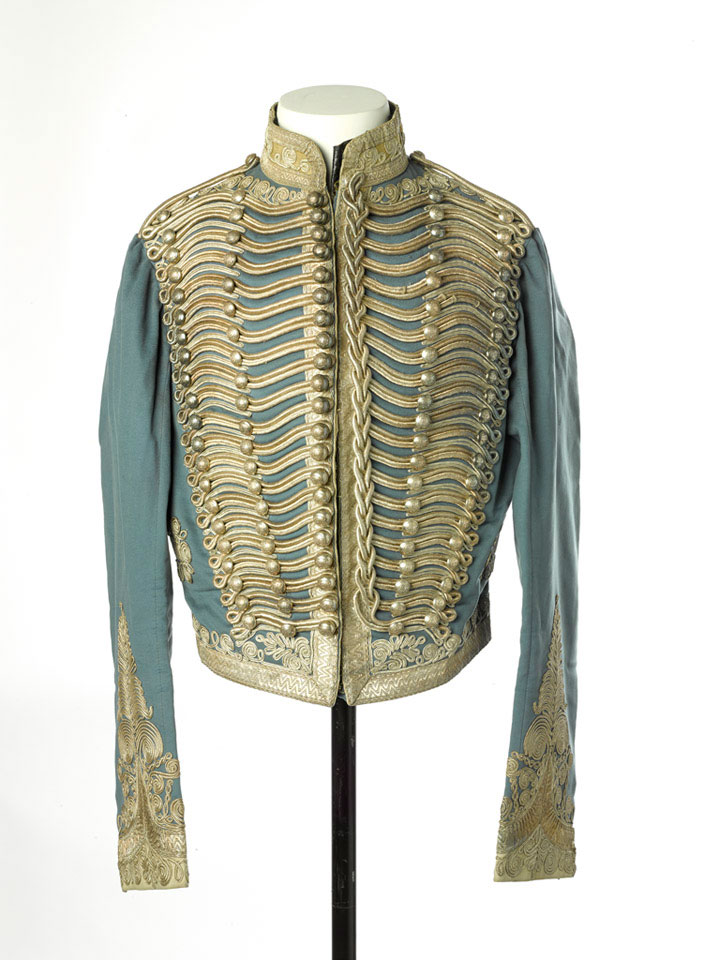
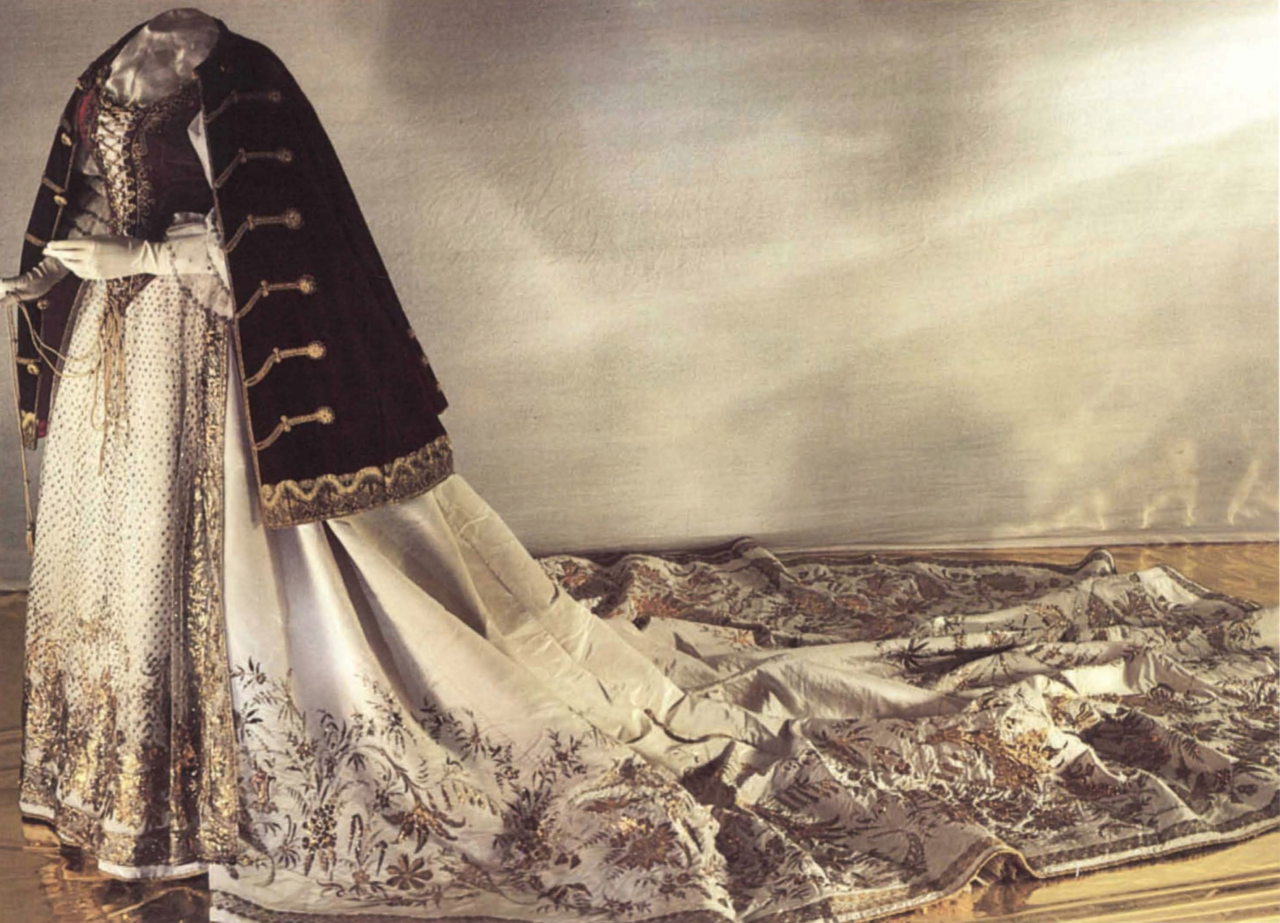
The Dictionary of Fashion History (2010) defines frogging as:
“Frog, frogging: an ornamental loop-fastening for a coat, used with a frog-button, associated with Brandenbourgs; Frog-button, olivette: a spindle-shaped braided button to pass through frog fastenings.”
Over time, frogging become more and more decorative, rather than practical, as is evident in the 1860 jacket worn by Captain John Grant Malcolmson (Fig. 3). Due to its close association with military uniforms, frogging can be seen on many ceremonial garments. For both men and women, frogging became prominent on garments worn by notable royal, government and religious figures, as seen in the gala dress of the wife of Lord Chief Justice György Majláth (Fig. 4).
From Fashion History Timeline
✉️ Stay Connected — Subscribe for Weekly Updates
Discover timeless stories, practical wisdom, and beautiful culture — delivered straight to your inbox.
*We only share valuable insights — no spam, ever.

